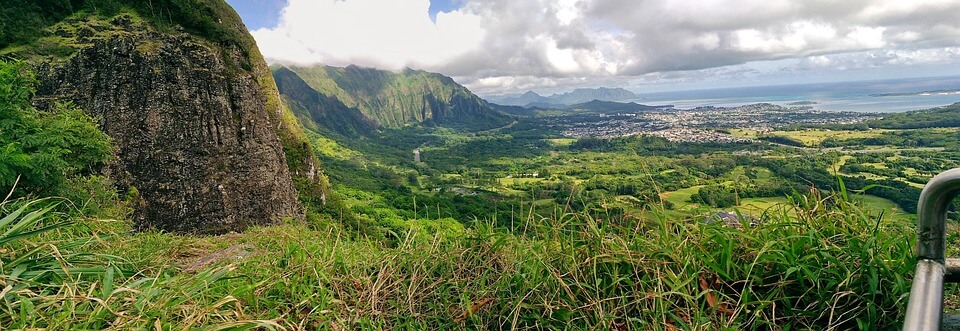
The Battle of Nuuanu
Ting Kamehameha the Great began his campaign to unify Hawaii in 1783. By 1795, he had only managed to unify the Big Island. In 1794 the chief of Oahu, Kahekili II died and civil war broke out. This civil war was fought between his half-brother Kaeokulani and his son Kalanikupule. His son eventually won but was seriously injured. During this time, King Kamehameha had been equipping his defense force with modern muskets and cannons. He trained his warriors in their use under direction of as British sailor named John Young.
In February 1795, the king had assembled the largest army the Hawaiian Islands had ever seen of 12,000 men and 1,200 war canoes. The British estimated the entire population of the Hawaiian Islands at less than 300,000. However, modern anthropologists believe the population was closer to one million. King Kamehameha originally moved against the southern islands of Maui and Molokai, conquering them in the early spring. He then invaded Oahu.
The Battle of Nuuanu began when King Kamehameha's forces landed on the southeastern portion of Oahu near Waialae and Waikiki. Spending several days to assemble supplies and scouting Kalanikupule's positions, Kamehameha's army advanced westward. There he encountered Kalanikupule's first line of defense near the Punchbowl Crater. The king then split his army into two. King Kamehameha sent one half in a flanking maneuver around the crater
and the other straight at Kalanikupule. Pressed from both sides, the Oahu forces retreated to Kalanikupule's next line of defense near Laim
King Kamehameha gave chase but he also secretly separated a portion of his army to clear the nearby heights of the Nuuanu Valley of Kalanikupule's cannons. King Kamehameha also brought up his own cannons to shell Laimi. During this part of the battle, Kalanikupule was wounded and later captured. With leadership in chaos, the Oahu army slowly fell back north through the valley to the cliffs at Nuuanu Pali. While there they were caught between the Hawaiian Army and a 1,000-foot drop. It is claimed that the Oahu warriors either jumped or were pushed over the edge of the Pali cliff. In 1898, construction workers on the Pali road discovered 800 skulls which were believed to be the remains of the warriors that fell to their deaths from the cliff above.
Although the islands were still not united, this battle was the peak of King Kamehameha's crusade and is referred to as the Kingdom of Hawaii. First he had to put down an uprising on the Big Island, and then he began his planning for the overthrow of Kauai. However, before this battle could be fought the king of Kauai submitted to Kamehameha. King Kaumualii gave him effective control over the Hawaiian Islands but King Kamehameha never conquered Kauai.
why book with us?
-

Secure Shopping
Safe, secure online booking system with validated privacy protection.
-

Advance Booking
SatisfactionFocus on what matters. Relax knowing your ceremonies are reserved and guaranteed.
-

Friendly Support
Our staff will answer any questions you may have and ensure 100% satisfaction.
